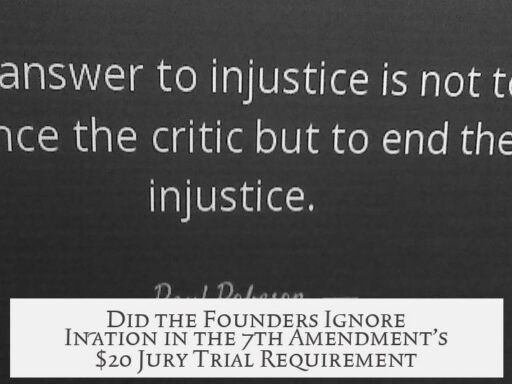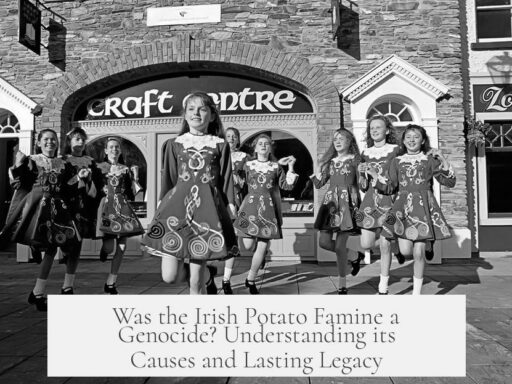The figure of the Knight-errant in medieval literature has a foundation in reality, though it is often idealized. Actual knights did wander in search of patronage and opportunities to prove themselves, but their actions were far more structured and practical than the romantic image suggests.
Medieval knights were mostly noble-born warriors, but only the eldest son typically inherited land and titles. Younger sons, and many knights without land, faced limited economic options. Many became household knights, serving lords directly. However, this role was unstable. If a lord died or lost power, his knights became “redundant,” forcing them to seek new patrons.
During the 12th century, especially post-civil war in England and after the costly Second Crusade, the number of knights exceeded the number of available noble patrons. This imbalance created a real class of wandering knights. These knights traveled, contacting former lords or scouting for wealthier nobles to join as retainers. Their survival often depended on securing such patronage.
To maintain their skills and reputation, wandering knights participated in tournaments. These events served multiple purposes:
- They kept knights occupied and prevented widespread banditry.
- Tournaments functioned as war games with sharp weapons, simulating battle scenarios.
- They allowed knights to gain prestige, often by capturing opponents.
- Knights earned money, food, and entertainment during these festivals.
The virtues displayed at these events—loyalty, courage, honesty—were central to medieval chivalry. Knights exhibited these by protecting comrades, accepting defeat gracefully, and honoring victories with humility. Tournaments became public stages for knights to prove their valor and chivalric worth.
Historical figures offer clear examples of knights-errant. Henry the Young King of England, lacking lands and official power, roamed the French tournament circuit with a large retinue, gaining fame through organized competition rather than spontaneous street combat. His lifestyle embodied the wandering knight ideal while remaining rooted in medieval social realities.
William Marshal’s experience also illustrates the wandering knight concept. After his lord settled land disputes, he found himself without a clear role. Like many in his position, he had to seek new opportunities, confirming the economic pressures behind knightly wandering.
Medieval literature on knights-errant often reflected real tournaments. Tales about Lancelot and Arthur’s knights coincided with the rise in tournaments. Some accounts suggest Henry the Young King was a model for these characters. Literature influenced tournaments, too—some even became themed “Round Tables” to emulate Arthurian ideals. This feedback loop shaped how knights presented themselves and organized competitions.
Knights sometimes imitated famed romance heroes at these events. For example, in 1240, knights adopted Arthurian personas and jousted under those names. A notable participant, Ulrich von Liechtenstein, traveled widely, challenging knights to duels in tournaments. Some knights undertook extreme challenges inspired by romantic tales, such as fighting while wearing eyepatches to demonstrate skill, though such actions were risky.
However, the notion that knights regularly fought duels on the street is inaccurate. Formal dueling—if it occurred—happened in controlled environments like tournaments. These events provided a legal and structured platform to resolve disputes or demonstrate prowess, avoiding random street violence.
| Aspect | Reality | Idealization |
|---|---|---|
| Wandering knights | Surplus knights traveled seeking employment and patronage. | Knights roaming freely to seek glory. |
| Tournaments | War games and job markets for knights. | Romantic battles for honor and love. |
| Combat style | Formalized contests under agreed rules. | Spontaneous street duels. |
| Chivalry | Loyalty, courage, honesty emphasized publicly. | Grand quests and feats performed alone. |
In summary, the knight-errant archetype reflects a real social class of wandering knights influenced by economic necessity and literature. Their public proving of chivalry took place mainly within tournaments, not informal or hazardous street fights. Historical knights like Henry the Young King validate the existence of knights-errant, though shaped by practical concerns rather than pure idealism.
- Wandering knights existed mainly due to surplus and lack of land inheritance.
- Tournaments were key venues for knights to demonstrate chivalry and skill.
- Idealized literary images shaped how knights and tournaments behaved.
- Random street duels were not historically common or accepted.
- Notable historical knights partly inspired the knight-errant literary archetype.
The figure of the Knight-errant: Reality vs Idealism
Were there really wandering knights who roamed the medieval lands to prove their chivalry, or is this just a grand tale spun by bards and scribes? The short answer: Yes, knights did wander, but their journeys were less about fanciful quests and more about practical survival in a turbulent era. They weren’t quite the dashing heroes dueling random foes on village streets, but rather skilled warriors navigating the social and economic tides of their time.
Let’s unpack the legend, separate the myths from the reality, and see how history and literature weave together the image of the knight-errant.
From Scrolls to Sword: The Literary Origins of the Knight-errant
Medieval stories painted knights as roaming champions of justice and chivalry, undertaking brave feats to win honor and perhaps impress a fair lady. This archetype, familiar to anyone who’s skimmed through *Le Morte d’Arthur* or other chivalric romances, was a powerful cultural image.
Knights-errant appear in these tales as lone warriors, setting off without a home or title, proving their worth by courage and loyalty. Their adventures often mixed valor with courtship—at least according to these romantic epics.
But What About Real-life Knights?
Real knights mostly inherited their profession, arriving at knighthood through birth and service. However, only the eldest son usually rated a neat land inheritance. Others—often numerous—had to find alternative paths.
- Many became household knights, serving a lord in exchange for livelihood.
- If their lord died or lost influence, knights found themselves unemployed.
- Some became what we might call “wandering knights”—knights without a master, looking for new patrons.
Imagine dozens, even hundreds, of armored warriors suddenly without sponsors. Starving? Perhaps not literally, but certainly they had to hustle to stay in the game.
Surplus Knights in a Time of Shortage
The socio-political backdrop intensified this knightly glut. After the brutal English civil wars and disastrous Second Crusade, many nobles were dead or ruined. Meanwhile, men-at-arms thrived.
This created a paradox: too many knights, too few nobles to serve and fewer lands to inherit. Those knights who found themselves redundant went wandering—not blindly, but with a plan to secure favor.
They contacted old allies or hunted down wealthy lords to join. It was more networking than a romantic adventure.
Tournaments: The Medieval Job Fair and Talent Show
In response, organized events sprang up to keep these knights occupied. These weren’t just grand parties; they were vital.
| Purpose | Details |
|---|---|
| Occupation | Keep knights busy and prevent banditry. |
| Selection | Identify the bravest and most skilled for patronage. |
| Reward | Money, food, and fame for knights. |
| Display Chivalry | Show loyalty, courage, and honesty in formal combat. |
Tournaments served as battle simulations, with sharp swords not mere stage props. Knights gained prestige by capturing fellow competitors, then ransoming them—a medieval form of professional sportsmanship gone wild.
Many knights followed a circuit of tournaments, living from one event to the next. This circuit was the closest thing to a knightly “road trip” proving their mettle.
Knights-errant in History: Not Just Fiction
Henry the Young King stands out as a prime example. He had a crown but no lands, plenty of money, and endless free time. His passion? French tournaments. He and his band traveled, fighting and winning—and thus were genuine knights-errant by any reasonable definition.
Interestingly, Henry avoided random street duels, which popular imagination romanticizes. Instead, his “wandering” was regulated, purposeful participation in formalized challenges.
William Marshall’s experience highlights another side. After his lord settled local disputes and no longer needed him, he found himself free—but not jobless. He too needed to find new service, illustrating the precarious nature of a knight’s existence.
When Literature Influenced Reality—and Vice Versa
The late 12th and early 13th centuries saw literary romances and real knightly exploits intermingle. Characters like Lancelot were inspired by knights such as Henry and William Marshall. Their lives fed the stories, which in turn influenced how knights and tournaments behaved.
Examples:
- Tournaments evolved into “Round Tables,” preferring structured challenges over chaotic melees.
- Some knights took Arthurian pseudonyms, like Ulrich von Liechtenstein, who jousted invoking legendary names.
- Romantic ideals even inspired quirky yet deadly feats—like fighting with eyepatches to prove skill per a love interest’s challenge. (Spoiler: it was usually a bad idea.)
And What about Those Street Duels?
The image of knights randomly dueling passersby? Pure fantasy. Medieval society had formal avenues for combat, such as these tournaments and legally sanctioned duels. Knights didn’t just settle disputes with impromptu sword fights down the alley; they followed rules, customs, and honor codes.
Summing Up the Knight-errant Reality
So, the knight-errant existed—but not exactly as the shining archetype from tales. They were mainly unemployed or underemployed knights who wandered to tournaments and noble courts seeking patronage, fame, and fortune. Their adventures were real but framed by social and economic necessity rather than purely idealistic quests.
Importantly, this wandering was organized, often accompanied by retinues, and their reputation was built through established venues like tournaments. Their lives inspired stories, which in turn shaped knightly culture and conduct.
Think of knights-errant as professional seekers of opportunity and honor scrupulously playing by medieval rules, not as lone vigilantes roaming the countryside.
Practical Lessons from Knight-errants for Today
- Networking (or “finding new lords”) is timeless in career survival.
- Showcasing your skills in the right venues matters; think tournaments, not random street brawls.
- Imbibing cultural ideals can shape your profession—look how literary chivalry changed tournaments.
- Adaptability is crucial—whether you inherit land or lose your patron, find new paths.
Want to dive deeper?
Scholars like Thomas Asbridge (on William Marshal) and Nigel Saul (on English chivalry) offer a treasure trove of insights. For a dash of medieval satire, Gordon M. Shedd’s work on *Flamenca* shines light on courtly love and knightly jest.
Next time you picture a knight-errant, remember: he’s probably on his way to the next tournament, polishing his armor, and sharpening wits more than his sword ready for a random duel. Reality is often more organized—and more fascinating—than legend.


